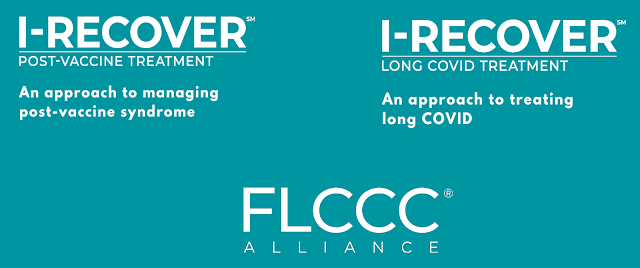Nattokinase Dissolves 84% of Amyloid Microclots Within 2 Hours In Vitro Study - Nicolas Hulscher, MPH
These are the same Thioflavin-T–positive, β-sheet, fibrinolysis-resistant clots now widely observed in Long VACCINE and Long COVID patients due to spike protein exposure. The anomalous microclots also appear to be behind the long white fibrous clots being pulled out of corpses by the majority of embalmers worldwide.
Their presence in every vaccinated individual tested underscores a crisis that the medical establishment has yet to acknowledge — and one that now demands immediate scientific attention.
If they are as widespread as early data suggests, then the most urgent question now becomes: How do we degrade them?
Nattokinase Breaks Down Amyloid Microclots
To generate true amyloid microclots, the researchers mixed fibrinogen with LPS, triggered clot formation with thrombin, and labeled the resulting structures with Thioflavin-T — producing the same β-sheet, ThT-positive fibrinaloid clots seen in human Long COVID and post-vaccine samples.
The Results Were Clear and Quantitative

At the higher dose (28 µg/mL), nattokinase reached peak activity at around 2 hours and produced:
~84% reduction in total clot number
(Figure 4A: 920 → 150)~52% reduction in total amyloid fluorescent intensity
(Figure 4B: 2500 RU → 1200 RU)~20% reduction in median clot size
(Figure 4C: 15 µm → 12 µm — though this metric underestimates true digestion because the smallest clots disappear first)
At the lower dose (14 µg/mL), nattokinase still produced substantial, dose-dependent effects:
~67% reduction in total clot number
(920 → 300)~20% reduction in total amyloid intensity
(2500 RU → 2000 RU)~7% reduction in median clot size
(15 µm → 14 µm)
In other words: nattokinase directly digested amyloid fibrin(ogen) structure.
The authors state this explicitly:
We show that recombinant nattokinase is effective at degrading the fibrinaloid microclots in vitro.
This is the strongest biochemical evidence to date that a natural fibrinolytic enzyme can break down the same amyloid microclots now found in the blood of vaccinated individuals and Long COVID patients.
Potent Dual-Activity
Amyloid fibrin microclots are not ordinary clots. They are structurally misfolded, β-sheet amyloid constructs that resist plasmin, resist rtPA, and trap inflammatory proteins in a dense mesh. Their resistance to dissolution means they can persist in circulation, obstruct capillaries, and contribute to a long list of chronic symptoms.
Adding to this, nattokinase has already been shown in studies to degrade the SARS-CoV-2 spike protein itself (in-vitro) —the same protein that drives amyloid transformation of fibrinogen and accelerates the formation of fibrinaloid microclots. This was one of the primary reasons nattokinase was incorporated into McCullough Protocol Base Spike Detoxification:

This dual activity is significant: nattokinase appears to be able to break down both the trigger (spike) and the pathological result (amyloid microclots). No pharmaceutical thrombolytic therapy has demonstrated this combined effect.
This makes nattokinase one of the few agents with a plausible mechanism to reduce amyloid clot burden without requiring invasive procedures, mechanical devices, or hospital-grade thrombolytics.
Secondary Evidence: Mechanical Clot Destruction via Ultrasound
Alongside this nattokinase study, another recent paper by Rasouli et al demonstrated that amyloid microclots can also be physically fragmented using low-frequency ultrasound, gas microbubbles, and rtPA in a microfluidic vein model. In the strongest condition — low-frequency ultrasound combined with microbubbles and rtPA — large amyloid microclots (>30 µm) were reduced from ~550 to ~20 (Figure 5F), representing a >90% reduction. This demonstrates that cavitation-enhanced ultrasound can physically shatter nearly all large amyloid microclots in a controlled microfluidic model.


However, this approach requires specialized ultrasound equipment, precise acoustic dosing, and close monitoring to avoid cavitation-related tissue damage. While the study clearly shows that amyloid microclots can be mechanically shattered with sufficient low-frequency ultrasound and microbubble–mediated forces, translating such a protocol into human clinical practice would demand extensive safety trials, controlled environments, and expert oversight. These methods may ultimately prove valuable for individuals with severe or refractory amyloid microclot burden.
The Path Forward
If amyloid microclots are present in 100% of COVID-19 vaccinated individuals in some cohorts, then the first priority is determining the true population prevalence. We urgently need large-scale, unbiased studies using standardized Thioflavin-T microscopy, flow cytometry, or advanced microfluidic analysis to map how widespread this pathology is.
Equally urgent is the need for human trials of nattokinase, evaluating:
pharmacokinetics at different dosing levels
optimal timing and duration
real-world effects on amyloid microclot/spike burden
symptom improvement
combination strategies with other natural fibrinolytics
Whether the wider scientific community chooses to act on this knowledge will determine how many people suffer long-term consequences from a serious problem that is now plainly visible.
About the Author: Nicolas Hulscher, MPH. Epidemiologist and Foundation Administrator, McCullough Foundation.
This base spike protein detox protocol consists of these three powerful ingredients: Spike Support's Nattokinase, Bromelain, and Tumeric Extract.
Vaccinated or not, prioritizing your well-being has never been more crucial.
Buy this ultimate detox bundle today, researched by Dr. Peter McCullough.

.png)



.png)



Comments
Post a Comment